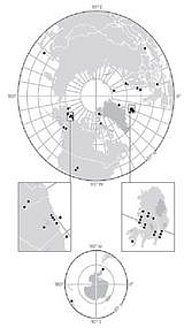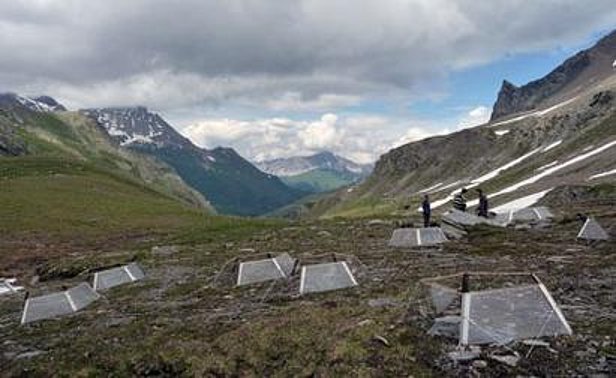International Tundra Experiment ITEX
Sonja Wipf
Esther Frei
1994 - 2030
The International Tundra Experiment is a scientific network of experiments focusing on the impact of climate change on selected plant species in tundra and alpine vegetation. Currently, research teams at more than 40 circumpolar sites carry out similar, multi-year plant manipulation experiments that allow them to compare annual variation in plant performance with respect to phenological response to climate conditions.
The ITEX research model combines long-term and short-term experimentation with monitoring and has the elegance and simplicity called for to understand ecosystem response and vulnerability to change. The experiment is designed to examine the effects of temperature change; maximize geographic representation, by minimizing technical and equipment requirements; be long-term; focus primarily on species; and, if resources permit, allow for genetic and system level studies.
Experiments with warming chambers ¶
Participation may be at several levels of complexity and sophistication depending on interests and available funding support. Each ITEX site operates some form of warming experiment. Most sites use open-top chambers to warm the tundra. These passive chambers affect plant growth and phenological development in a variety of ways. Each ITEX study site is expected to collect similar data following established protocols provided in the ITEX Manual. Collectively the ITEX network is able to pool its data sets to examine vegetation response at varying levels, for example genetics (from ecotype to functional type), across space (from habitats to ecosystems) and over time.

Plants grow taller and become more abundant ¶

Across all study sites, we found changes in vegetation height and abundance of growth forms were largely consistent with predictions based on warming experiments. Inter-site comparisons indicated that shrubs (particularly deciduous shrubs), were increasing over time primarily in sites that were warming rapidly over the study period, but this pattern was only apparent in locations that were already quite warm. In contrast, the vegetation in the coldest tundra sites was relatively insensitive to climate warming.
Swiss field site
The Swiss ITEX site is located in Val Bercla, Mulegns, GR. It was set up in 1994 by Felix Gugerli (WSL) and has been maintained by SLF since 2009. In this experiment, we warm alpine vegetation with passive warming chambers (OTCs, open top chambers). The vegetation consists of alpine cushion plants, dwarf willows, grasses and sedges. We investigate vegetation changes over time in warmed and in control plots. As we expect ongoing climate change to affect alpine vegetation, we plan to continue to maintain the Swiss ITEX site.

